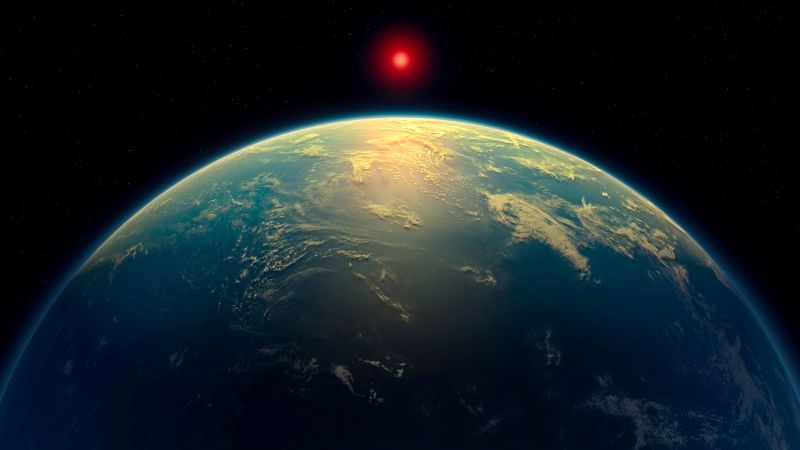In a groundbreaking revelation, scientists utilizing the James Webb Space Telescope (JWST) have uncovered what they consider to be substantial evidence suggesting the potential for life beyond our solar system. This discovery involves the detection of specific chemical markers within the atmosphere of an exoplanet dubbed K2-18 b. Key gases identified include dimethyl sulfide (DMS) and dimethyl disulfide (DMDS), which are generally associated with biological activity on Earth, predominantly from microorganisms like marine phytoplankton.
As researchers analyze this data, they emphasize that their findings do not confirm the existence of living organisms on K2-18 b; rather, they propose that these gases may serve as biosignatures—indications of biological processes—within the planet’s atmosphere. Their initial excitement is tempered with caution, acknowledging the necessity for further observations to substantiate these claims. Astrophysicist Nikku Madhusudhan, who spearheaded the study at the University of Cambridge’s Institute of Astronomy, expresses this sentiment clearly. He describes the moment as transformational for the field of astrobiology, suggesting that the current technology can allow for meaningful searches for signs of life on potentially habitable planets.
K2-18 b, which is roughly 8.6 times the mass of Earth and about 2.6 times in diameter, orbits within the “habitable zone” of a red dwarf star located around 124 light-years away from Earth in the constellation Leo. This zone is critical as it suggests conditions may be suitable for the existence of liquid water, a vital element for life as we know it. Presently, more than 5,800 exoplanets have been confirmed since the 1990s, leading to hypotheses about the nature of different planetary environments. Specifically, K2-18 b belongs to a category of planets theorized to be hycean worlds—planets enveloped in liquid oceans that could very well host a diverse range of life forms.
The significance of this discovery is further highlighted by earlier findings of methane and carbon dioxide within the atmosphere of K2-18 b—marking the first detection of carbon-based molecules in the atmosphere of an exoplanet strategically situated in a star’s habitable zone. Madhusudhan points out that the current data suggests a scenario in which K2-18 b is reminiscent of a hycean world filled with microbial life. However, the notion of multicellular organisms or advanced life forms remains speculative at this stage.
Determining K2-18 b’s atmospheric composition involves meticulous observation. Scientists apply the transit method to analyze starlight filters through the planet’s atmosphere as it moves in front of its host star from Earth’s perspective. This technique has enabled Webb to identify atmospheric gas concentrations exceeding 10 parts per million, indicating levels thousands of times higher than similar gases found on Earth.
While the findings exhibit a remarkable 99.7% confidence level regarding the presence of these gases, the scientific community remains cautiously optimistic. External experts advise against jumping to conclusions. Christopher Glein, a principal scientist at the Southwest Research Institute, underscores the need for thorough validation of these intriguing results.
As we venture further into the realms of exoplanet exploration, Madhusudhan acknowledges the excitement surrounding potential life beyond Earth. He notes that our species has long pondered the possibility of life in the universe, hinting at a future where we might finalize our understanding related to potential inhabitants on hycean worlds. However, he insists on the importance of confirmatory observations to ensure that findings are robust. The next steps involve observing the planet multiple times to minimize the chances of statistical inaccuracies and examining potential non-biological processes that could produce the detected gases.
In sum, although the potential implications of the research are vast, scientists recognize the necessity for rigorous validation before making any definitive claims regarding the presence of life beyond our planet.












